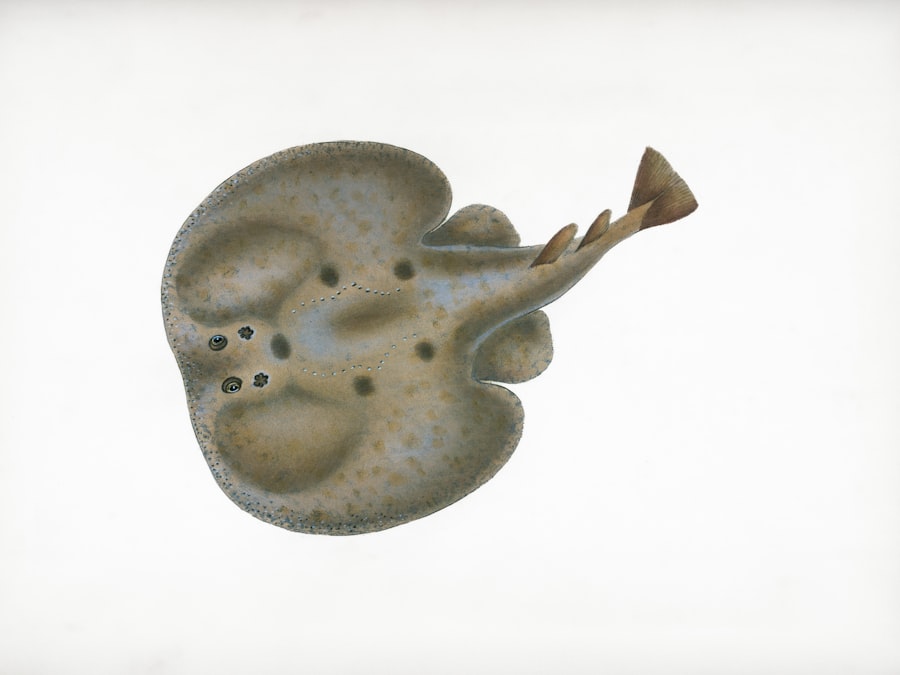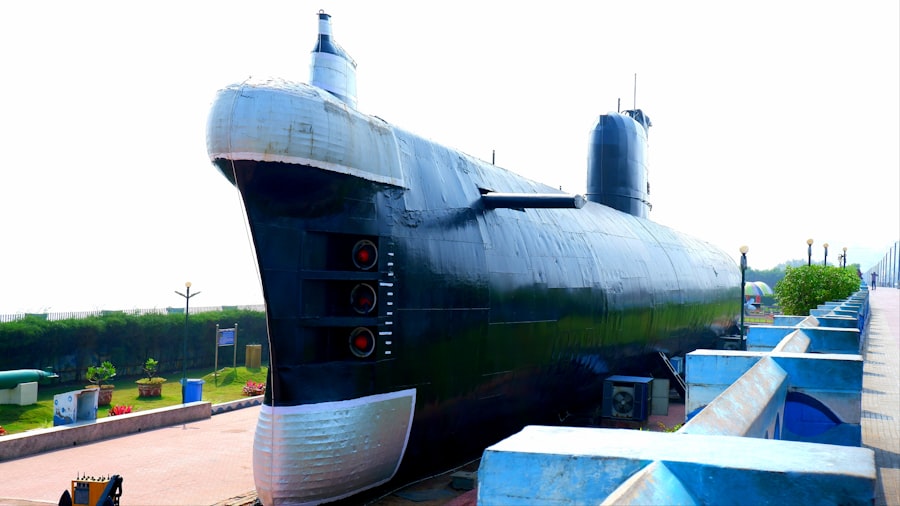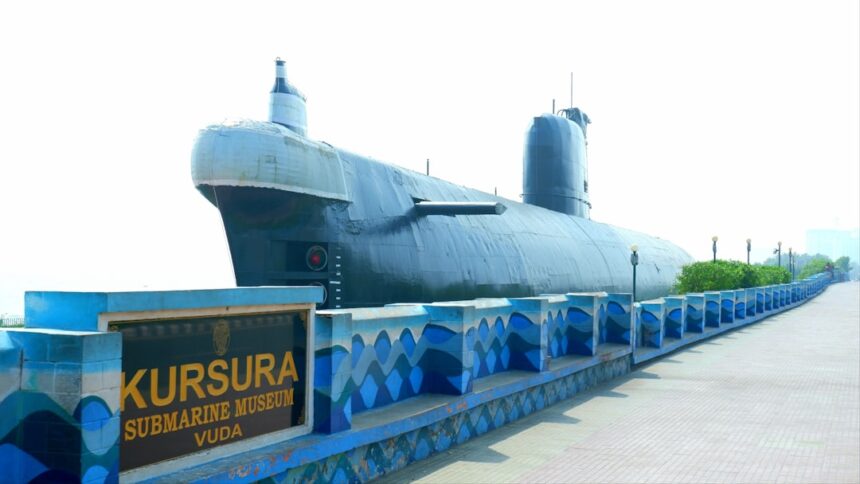The emergence of the Poseidon torpedo, a cutting-edge underwater drone developed by Russia, has raised significant concerns within the realm of international security. This advanced weapon system, designed for stealth and lethality, poses a unique challenge to naval forces around the globe. Capable of traveling at remarkable speeds and operating at great depths, the Poseidon torpedo is not merely a technological marvel; it represents a strategic shift in underwater warfare.
As nations grapple with the implications of this new threat, NATO finds itself at the forefront of addressing the challenges posed by such innovations in military technology. The Poseidon torpedo’s potential to deliver nuclear payloads adds an alarming dimension to its capabilities. Its design allows it to evade traditional detection methods, making it a formidable adversary for naval defense systems.
As NATO member states assess the implications of this weapon, they must consider not only the immediate threat it poses but also the broader geopolitical ramifications. The introduction of such advanced weaponry into the maritime domain necessitates a coordinated response from NATO, emphasizing the alliance’s commitment to maintaining security and stability in Europe.
Key Takeaways
- The Poseidon torpedo threat poses a significant challenge to maritime security in Europe.
- NATO plays a crucial role in ensuring the security and defense of its member states in the face of emerging threats.
- The capabilities of the Poseidon torpedo highlight the need for advanced anti-torpedo defense systems.
- NATO is actively coordinating and communicating with member states to address the Poseidon torpedo threat.
- Intelligence sharing and diplomatic engagement with Russia are key components of NATO’s ongoing commitment to addressing maritime threats.
Overview of NATO’s Role in European Security
NATO, or the North Atlantic Treaty Organization, has long been a cornerstone of European security since its establishment in 1949. Originally formed as a collective defense alliance against the Soviet Union, NATO has evolved to address a wide array of security challenges, including terrorism, cyber threats, and now, emerging maritime threats like the Poseidon torpedo. The alliance’s primary objective remains the protection of its member states through mutual defense agreements and cooperative security measures.
In recent years, NATO has adapted its strategies to respond to new threats that transcend traditional military boundaries. The rise of hybrid warfare and advancements in military technology have prompted NATO to enhance its capabilities and readiness. The alliance’s focus on collective defense is complemented by its commitment to crisis management and cooperative security, ensuring that member states can effectively respond to any potential aggression.
As the Poseidon torpedo threat looms, NATO’s role in European security becomes increasingly vital, necessitating a unified approach among its members.
Understanding the Capabilities of the Poseidon Torpedo

The Poseidon torpedo is not just another weapon in Russia’s arsenal; it represents a significant leap forward in underwater warfare technology. With its ability to travel at speeds exceeding 60 knots and operate at depths of over 1,000 meters, the Poseidon is designed to evade detection by conventional sonar systems. This stealth capability allows it to approach naval targets undetected, making it a potent threat to surface vessels and submarines alike.
Moreover, the Poseidon torpedo is equipped with advanced guidance systems that enable it to navigate complex underwater environments autonomously. Its potential for carrying nuclear warheads amplifies its strategic significance, as it can target coastal cities or naval bases with devastating precision. The combination of speed, depth, and payload capacity makes the Poseidon a game-changer in naval warfare, compelling NATO to reassess its maritime defense strategies and capabilities in light of this emerging threat.
NATO’s Initial Assessment of the Poseidon Torpedo Threat
| Aspect | Assessment |
|---|---|
| Threat Level | High |
| Impact | Severe |
| Range | Unknown |
| Speed | High |
In response to the unveiling of the Poseidon torpedo, NATO conducted an initial assessment to evaluate the implications for European security. This assessment highlighted the need for enhanced situational awareness and intelligence-gathering capabilities among member states. The alliance recognized that traditional anti-submarine warfare tactics may be insufficient against such an advanced weapon system, prompting discussions on innovative countermeasures.
NATO’s assessment also underscored the importance of collaboration among member states in addressing this new threat. The alliance’s collective defense principle means that all members must be prepared to respond to potential aggression, and the Poseidon torpedo’s capabilities necessitate a unified approach. By sharing intelligence and resources, NATO aims to develop effective strategies to mitigate the risks posed by this advanced underwater drone.
Coordination and Communication Among NATO Member States
Effective coordination and communication among NATO member states are crucial in addressing the Poseidon torpedo threat. The complexity of modern warfare demands that nations work together seamlessly to share information and resources. In light of this challenge, NATO has established various mechanisms for real-time communication and collaboration among its members.
Regular meetings and joint exercises are essential components of NATO’s strategy to enhance coordination. These initiatives allow member states to share best practices, assess vulnerabilities, and develop joint responses to emerging threats. By fostering an environment of open communication, NATO aims to ensure that all member states are equipped with the knowledge and tools necessary to counteract the Poseidon torpedo threat effectively.
NATO’s Efforts to Strengthen Maritime Defense in Response to the Poseidon Torpedo Threat

In light of the Poseidon torpedo’s capabilities, NATO has initiated several efforts to bolster its maritime defense posture. Recognizing that traditional naval strategies may not suffice against such an advanced threat, the alliance is investing in new technologies and tactics designed specifically for countering underwater drones. This includes enhancing anti-submarine warfare capabilities and developing advanced detection systems that can identify stealthy threats.
Additionally, NATO is focusing on improving interoperability among its naval forces. By ensuring that different member states’ fleets can operate cohesively, NATO enhances its overall maritime defense effectiveness. Joint training exercises are being conducted to familiarize personnel with new technologies and tactics aimed at countering threats like the Poseidon torpedo.
These efforts reflect NATO’s commitment to adapting its strategies in response to evolving security challenges.
Collaborative Measures with Allied Navies to Counter the Poseidon Torpedo
Collaboration with allied navies is a critical aspect of NATO’s strategy to counter the Poseidon torpedo threat. Recognizing that no single nation can effectively address this challenge alone, NATO is fostering partnerships with other maritime powers. These collaborations involve sharing intelligence, conducting joint exercises, and developing common operational frameworks for countering underwater threats.
Through these collaborative measures, NATO aims to create a unified front against potential aggressors. By pooling resources and expertise from various allied navies, member states can enhance their collective capabilities and improve their readiness to respond to emerging threats like the Poseidon torpedo. This approach not only strengthens individual nations’ defenses but also reinforces NATO’s overall deterrence posture.
NATO’s Investment in Advanced Anti-Torpedo Defense Systems
To effectively counter the Poseidon torpedo threat, NATO is investing heavily in advanced anti-torpedo defense systems. These systems are designed to detect and neutralize underwater threats before they can reach their intended targets. By leveraging cutting-edge technology such as sonar arrays, unmanned underwater vehicles (UUVs), and advanced tracking systems, NATO aims to create a robust defense network capable of identifying and intercepting stealthy torpedoes.
Moreover, research and development efforts are underway to explore innovative solutions for countering underwater drones like the Poseidon. This includes exploring artificial intelligence applications for enhanced detection capabilities and developing new materials that can withstand underwater explosions. By prioritizing investment in these advanced systems, NATO seeks to ensure that its maritime forces remain resilient against evolving threats.
The Role of Intelligence Sharing in Addressing the Poseidon Torpedo Threat
Intelligence sharing plays a pivotal role in addressing the Poseidon torpedo threat within NATO. The ability to gather and disseminate information about potential adversaries’ capabilities is essential for effective decision-making and response planning. Through established intelligence-sharing frameworks, member states can access real-time data on developments related to underwater warfare technologies.
NATO has implemented various initiatives aimed at enhancing intelligence sharing among its members. This includes joint intelligence centers where representatives from different nations collaborate on assessments related to emerging threats like the Poseidon torpedo. By fostering a culture of transparency and cooperation, NATO aims to ensure that all member states are informed about potential risks and can respond effectively.
NATO’s Diplomatic Engagement with Russia on the Poseidon Torpedo Issue
While military preparedness is crucial in addressing the Poseidon torpedo threat, diplomatic engagement with Russia remains an essential component of NATO’s strategy. Recognizing that dialogue can help mitigate tensions and prevent misunderstandings, NATO has sought opportunities for diplomatic discussions regarding emerging military technologies. Through various channels, including formal meetings and informal dialogues, NATO aims to communicate its concerns about the implications of the Poseidon torpedo for regional stability.
By engaging with Russian officials on this issue, NATO seeks to promote transparency and build confidence between nations. This diplomatic approach complements military readiness efforts by fostering an environment where dialogue can help de-escalate potential conflicts.
NATO’s Ongoing Commitment to Addressing Emerging Maritime Threats
As the geopolitical landscape continues to evolve, NATO remains steadfast in its commitment to addressing emerging maritime threats like the Poseidon torpedo. The alliance recognizes that maintaining security in Europe requires a multifaceted approach that encompasses military readiness, intelligence sharing, diplomatic engagement, and collaborative measures with allied navies. By investing in advanced technologies and fostering cooperation among member states, NATO aims to ensure that it remains prepared for any challenges that may arise in the maritime domain.
The Poseidon torpedo serves as a reminder of the need for vigilance in an era where technological advancements can reshape warfare dynamics. Through its ongoing efforts, NATO reaffirms its dedication to safeguarding peace and stability in Europe amidst evolving security challenges.
In response to the growing concerns surrounding the Poseidon torpedo, NATO has been actively reassessing its strategic posture and defense capabilities. The implications of this advanced weapon system have prompted discussions on collective security and deterrence strategies among member nations. For a deeper understanding of NATO’s evolving response to such threats, you can read more in this related article on In The War Room.
WATCH THIS! The Secret Russian Weapon That Terrifies NATO
FAQs
What is the NATO response to the Poseidon torpedo?
NATO has expressed concern about Russia’s development of the Poseidon nuclear-powered underwater drone, which is designed to carry a nuclear warhead and target coastal areas.
How has NATO responded to the Poseidon torpedo?
NATO has stated that the development of the Poseidon torpedo raises concerns about strategic stability and arms control. The alliance has called for transparency and dialogue with Russia on this issue.
What are the implications of the Poseidon torpedo for NATO?
The development of the Poseidon torpedo by Russia has raised concerns about the potential for a new arms race and the destabilizing impact of nuclear-powered underwater drones. NATO has emphasized the need for arms control and risk reduction measures in response to this development.
What actions has NATO taken in response to the Poseidon torpedo?
NATO has emphasized the importance of arms control and dialogue with Russia to address the implications of the Poseidon torpedo. The alliance has also underscored the need for transparency and risk reduction measures to mitigate the potential impact of this new weapon system.




